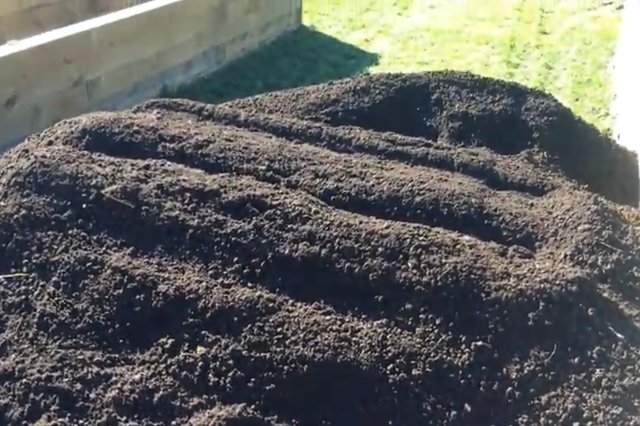On the natural formation of topsoil

Topsoil is one of our most valuable natural resources. Without it, we cannot grow our food.
Although the ability to generate this resource is the oldest collection of knowledge known to human history, we seem to have all but forgotten this technology in our mainstream society.
Today we take a glimpse into agricultural history and bring some of this knowledge into present times in a coherent, easy to understand manner which can be proliferated worldwide to enable an over abundance of this precious material.
Even if we have never owned or cared for a garden , we have all, at least, seen images of farmers and the tools of their trade, and historical representations of the art of agriculture.
These tools come in many forms, each one designed for a specific set of functions, but one has historically been used explicitly for soil development. Until recent times, that is.
Today we only know one simplified use for this tool, and that is merely a cosmetic function, not its true purpose. I am, of course, talking about the rake. Our modern culture has developed a use for this tool in the function of ‘clean up’, when in reality its’ intended purpose is as a tool for gathering. Specifically, the gathering of organic material and decaying vegetative matter.
This is usually done in mounds or specific areas devoted for soil generation. It can even be the very land we intend as the final destination of our new soil. Nature provides the rest of the work, but an understanding of the processes involved can help us create the proper conditions.
The breakdown of organic material into usable top soil is performed through many natural processes, but here we will focus on two main soil generation mechanisms that convert material rapidly and effectively. The first of these are fungal groups that already exist in the ground, we need not do anything, these organisms will naturally grow throughout our debris pile and assist in the process. The other mechanism deserves its’ own focus.
This is caused by vermin. <- wait, before you go turning an ugly nose to the wind, you may not know what that word actually means.
Our modern culture has assigned an alternative meaning for the word and is often misassociated with rodents and other pests. Many credible sources even go so far as to define the word synonymously with varmint. While this is one of our modern cultural uses for the word, it is not the original meaning or use. This fact often leads to a mistranslation of historical agricultural knowledge.
Vermin are actually the creatures in the ground that convert decaying organic matter into soil.
Vermin can be any number of microorganisms and simple invertebrates, Worms are the most commonly known, and are the primary subject of vermiculture and vermicompost, but these fields of study are not necessary for soil generation.
Simply a basic knowledge of the presence of vermin in the process can help us understand the conditions we need to create. Namely, a dark moist environment.
This is done by wetting the mound of material and covering it. We can use a tarp or sheet of plastic, or even cover the mound with a layer of dirt.
Keeping the material moist (not flooded), will encourage the presence of vermin, we can even intentionally add worms to our yard or acreage by purchasing them from a worm farmer or bait store.
Even large piles of debris can be converted into rich, dark topsoil in as short as a single season.
Leaves and grass clippings are an excellent source of biomatter for soil generation, and the process of conversion takes place naturally on forest floors. Cultures of the past learned to replicate and accelerate this process.
Unused portions of crop yield, leaf debris, grass clippings, wood mulch, etc. can be recycled into the process, mitigating much of the impact the crops and plant growth has on overall soil quality.
Using the rake to mix the piles at intervals during the process can help speed things up, by exposing more material to the mycelium and vermin. As the piles break down, worms will travel to surrounding soil, depositing minerals and improving the quality of that soil as well.
Assisting this simple natural process can insure an abundant supply of quality top soil for the generations of the future. The future of mankind depends on it.
Civilizations of the past made great efforts to protect this knowledge and ensure it survived the trials of time. Let us show our appreciation by not being the ones that forget it.